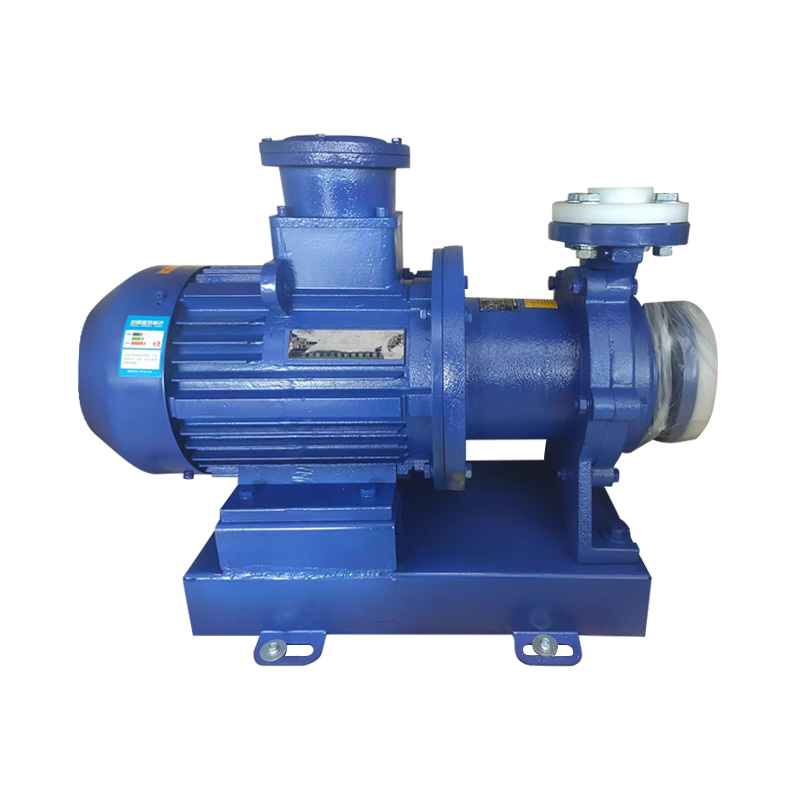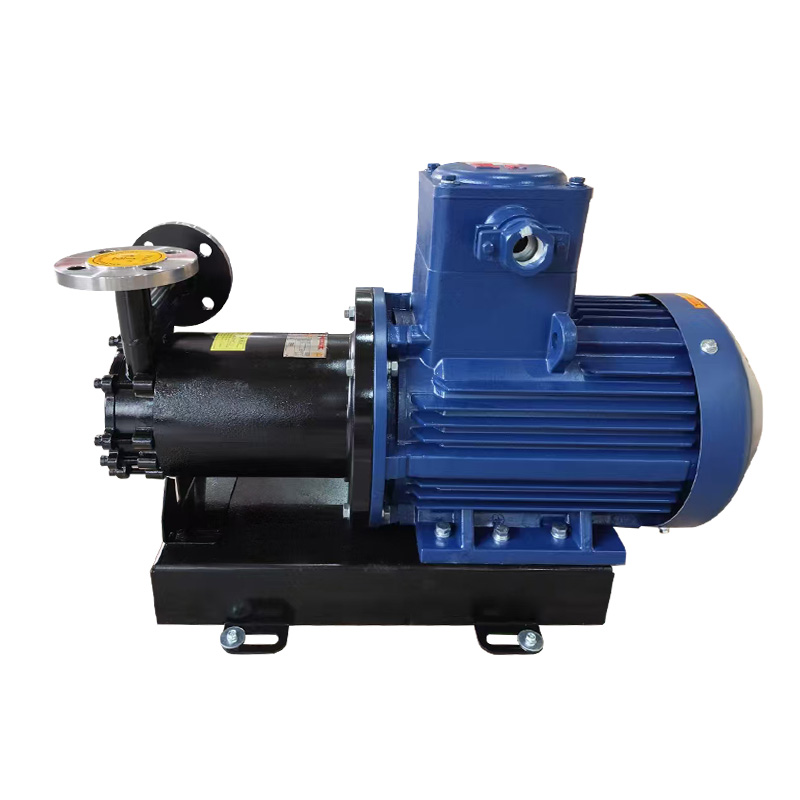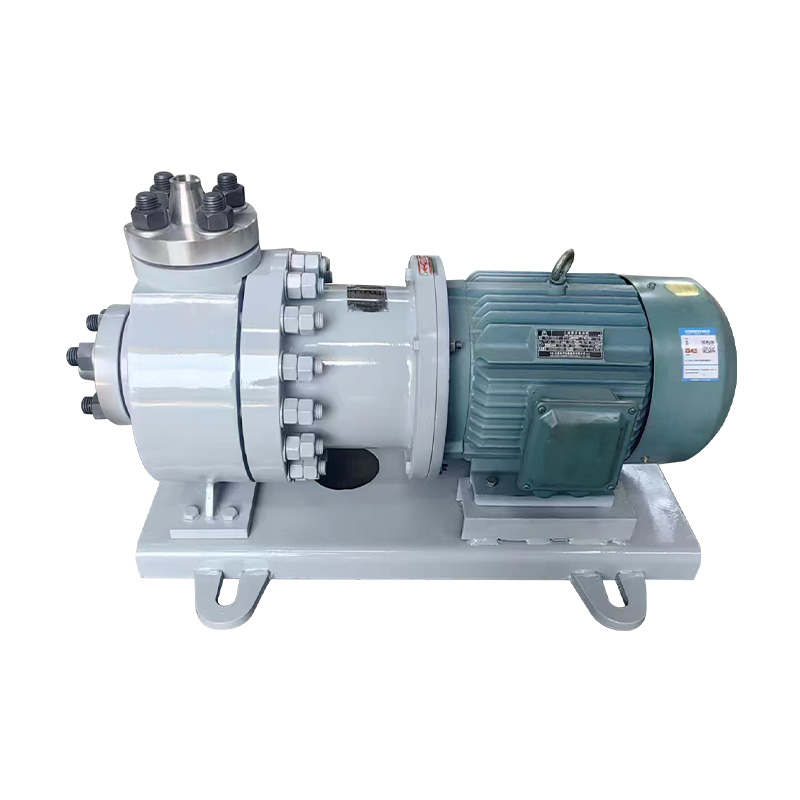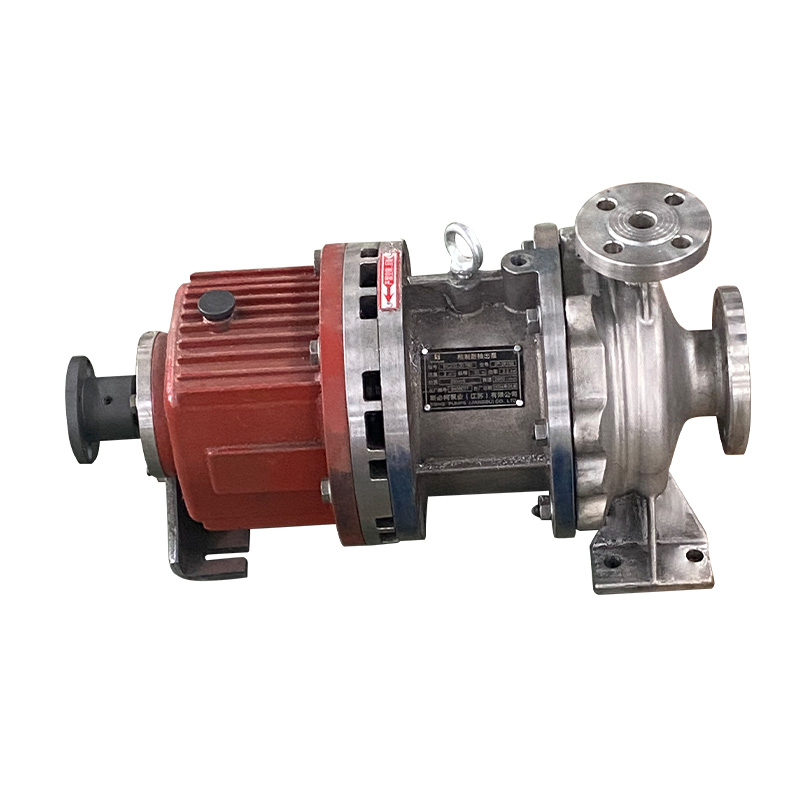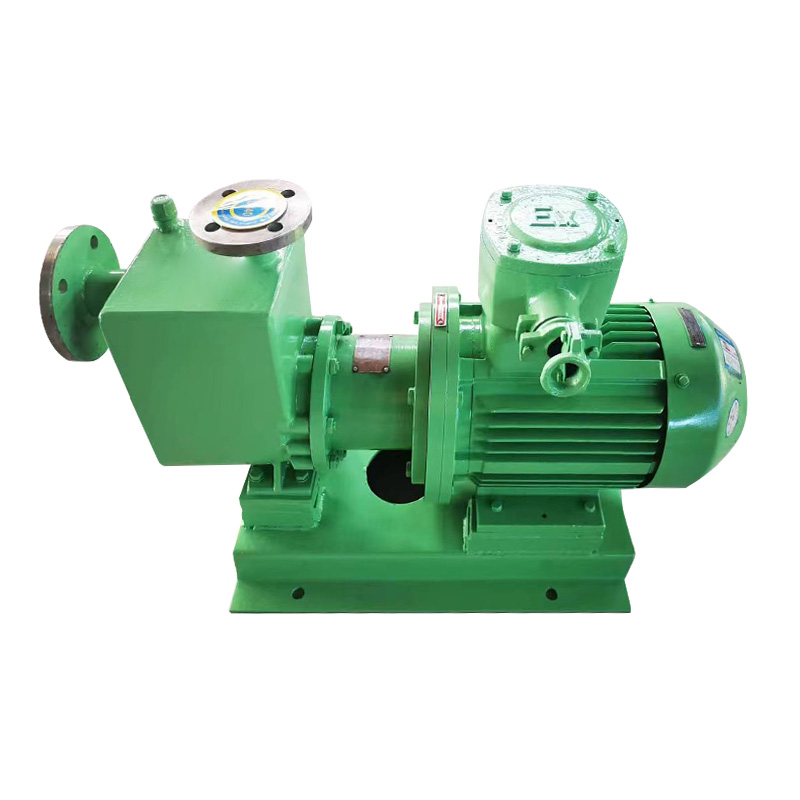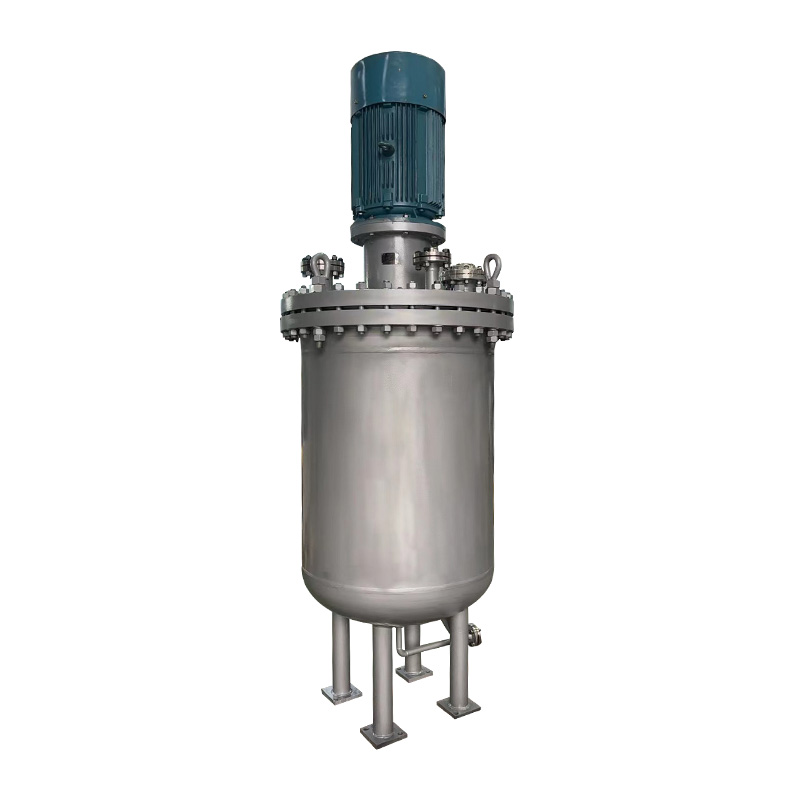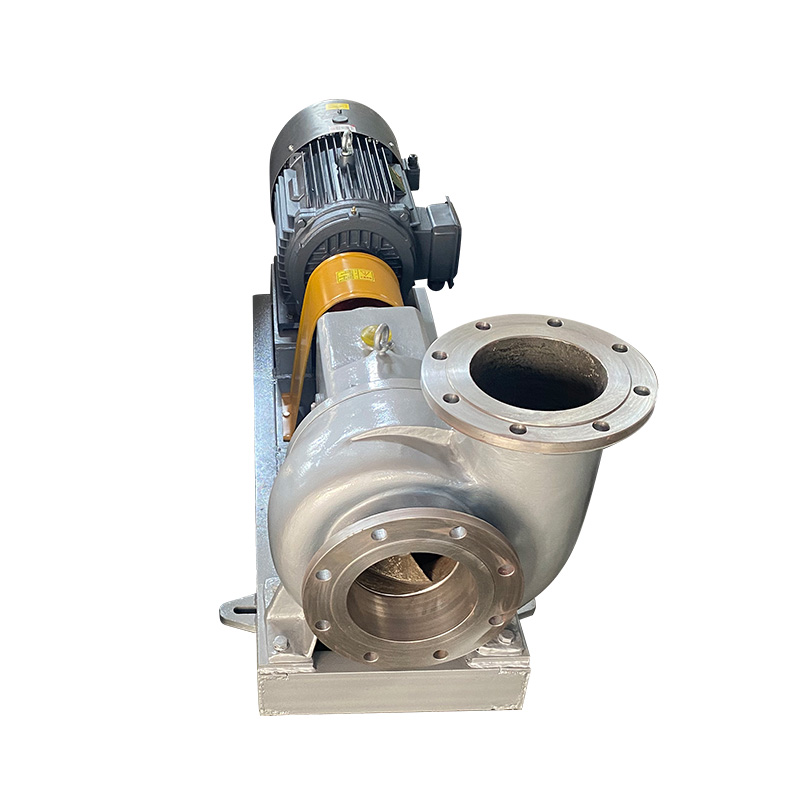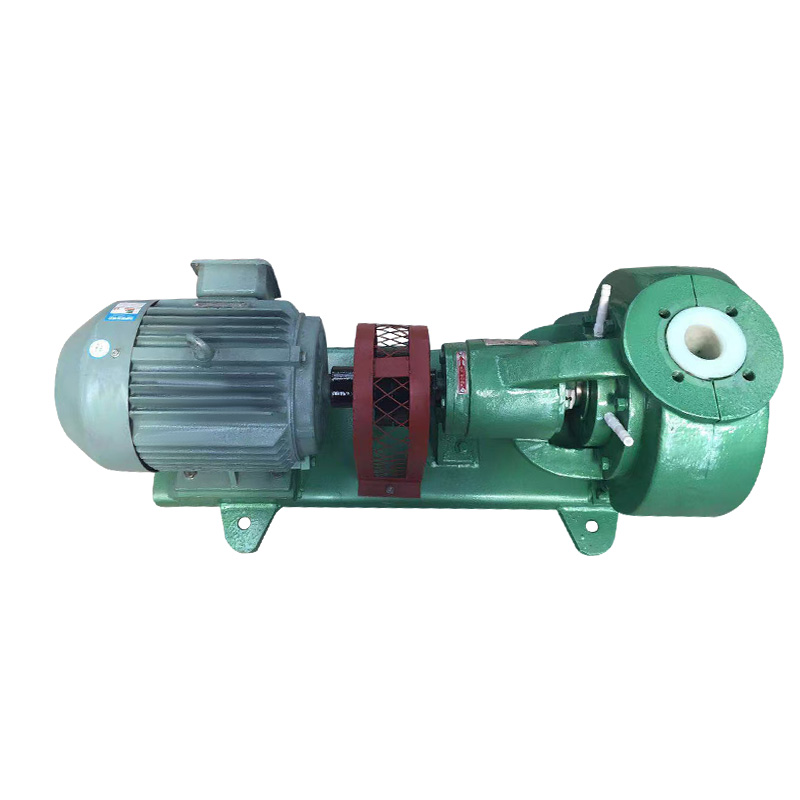Magnetic Drive: How Leak-Free Operation is Achieved
The core of a magnetic drive pump lies in its unique non-contact transmission method. It uses a magnetic coupling to transmit torque, transferring the power of the motor to the internal impeller through external magnetic force, thereby driving the fluid. Between the pump chamber and the drive part, a completely sealed isolation sleeve separates the two, which completely eliminates the possibility of liquid leakage from the pump shaft. This design not only eliminates the shaft seals (such as packing or mechanical seals) necessary for traditional pumps but also fundamentally solves the leakage problem caused by wear, aging, or failure of seals. Especially when handling toxic, flammable, explosive, or corrosive media, this design provides crucial safety guarantees.
Application and Selection of Leak-Free Pumps in the Chemical Industry
In chemical production, many media are highly corrosive, toxic, or volatile, and once leaked, the consequences can be disastrous. Leak-free pumps are designed to meet these challenges. When selecting a pump, factors such as the chemical properties, temperature, viscosity, and specific gravity of the conveyed medium must be comprehensively considered. For example, for strong acids and alkalis, corrosion-resistant pump bodies and isolation sleeve materials such as polypropylene or fluoroplastic need to be selected. For media containing solid particles, a special structural design is required to prevent wear. Reasonable selection of leak-free pumps can not only ensure production safety but also reduce environmental pollution and material loss caused by leakage, bringing significant economic benefits.
Leak-Free Solutions Under High Temperature and High Pressure
High temperature and high pressure environments pose severe challenges to the sealing performance of pumps. Traditional seals are prone to failure under such working conditions, leading to leakage. Leak-free pumps, especially magnetic drive pumps, can effectively cope with this. By using high-temperature resistant isolation sleeve materials (such as Hastelloy or titanium alloy) and special thermal isolation structure design, it can ensure that the high temperature of the internal fluid does not affect the external magnets, thus ensuring the normal operation of the pump. At the same time, the robust design of the pump body and isolation sleeve can withstand high pressure, fundamentally eliminating the hidden danger of leakage. This technology has been widely used in petrochemical, nuclear industry, and other fields with extremely high safety requirements.
Comparison Between Leak-Free Pumps and Traditional Sealed Pumps
Traditional pumps rely on packing or mechanical seals to prevent leakage, but both types of seals have inherent limitations. Packing seals require regular adjustment and replacement and have dripping phenomena, while mechanical seals, although performing better, will eventually fail due to friction and wear of the dynamic and static rings. In contrast, leak-free pumps have no dynamic seals, fundamentally eliminating the risk of wear and failure. Although the initial investment of leak-free pumps may be higher, in long-term operation, due to the absence of frequent replacement of seals, low maintenance costs, lower energy consumption, and elimination of material loss and environmental pollution risks, their total cost of ownership is much lower than that of traditional pumps.
Daily Maintenance and Troubleshooting of Common Problems
To ensure the long-term stable operation of leak-free pumps, daily maintenance and inspection are crucial. Maintenance work mainly focuses on checking the external parts of the pump, such as observing whether the motor has abnormal vibration or noise, checking whether the cooling system is working normally, and monitoring whether the operating parameters are within the specified range. Due to its seal-free design, the demand for internal maintenance is greatly reduced. When abnormal operation occurs, common faults may include insufficient flow, abnormal pressure, or increased noise. These problems are usually related to pipeline blockage, impeller wear, or motor failure. Most problems can be quickly solved through careful inspection and elimination.



 English
English русский
русский Español
Español